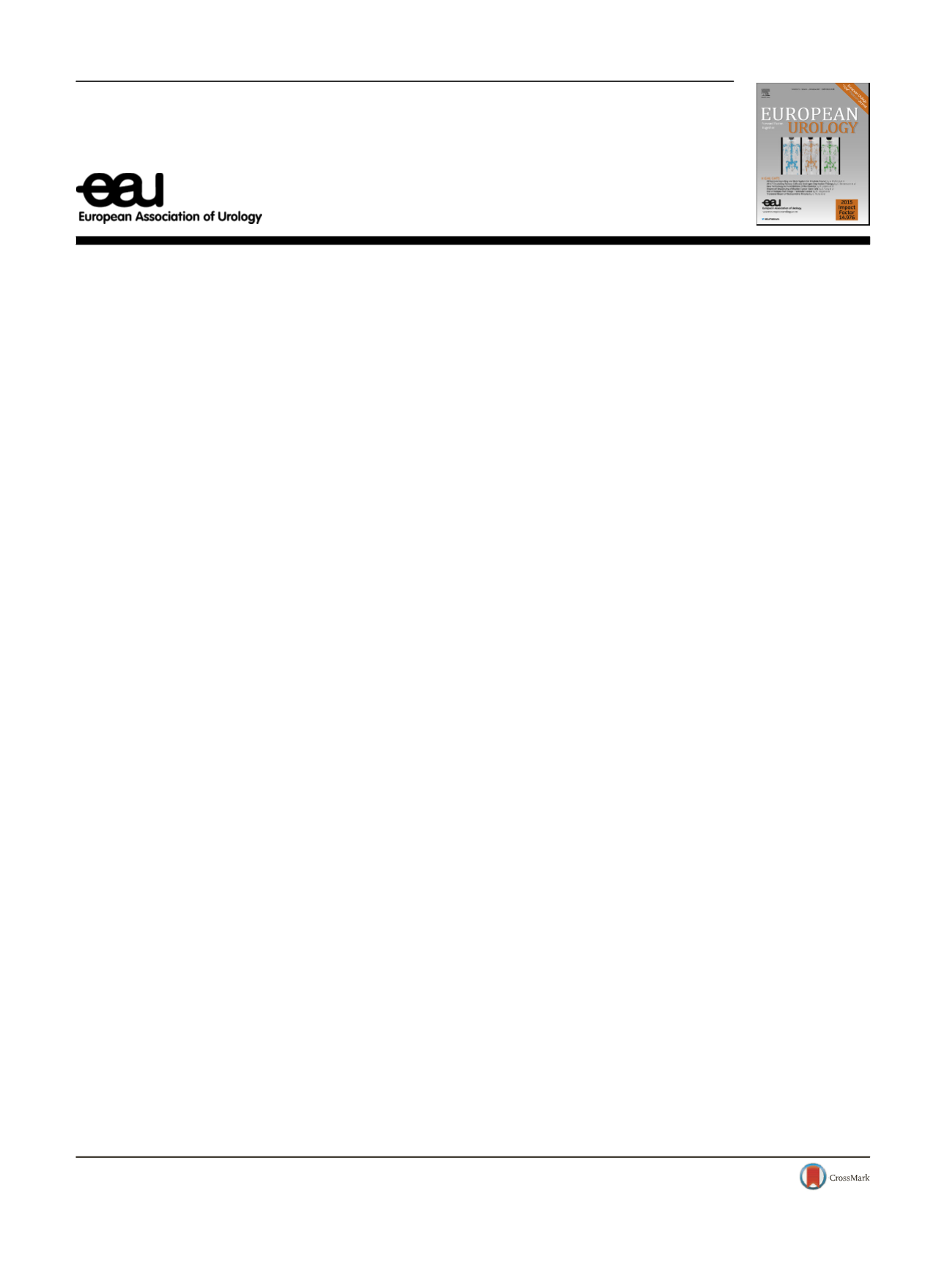

Platinum Priority
–
Editorial
Referring to the article published on pp. 931
–
939 of this issue
Why Epidemiological Studies of Physical Activity in Prostate
Cancer Often Underestimate its Benefits
Mary Kathryn Downer
*Harvard T.H. Chan School of Public Health, Boston, MA, USA
Wang et al
[1]conducted a rigorous analysis investigating
physical activity and survival after prostate cancer diagno-
sis. Major strengths of this study include a large sample size,
almost 20 yr of follow-up, and information on physical
activity both before and after prostate cancer diagnosis.
Among men later diagnosed with nonmetastatic (Mx/M0)
prostate cancer, those with higher levels of prediagnostic
physical activity (equivalent to 4.4 h/wk of brisk walking)
had a 37% lower risk of progression to prostate cancer
–
specific mortality compared to sedentary men. Postdiag-
nostic recreational physical activity was associated with a
lower risk of progression to prostate cancer
–
specific
mortality, regardless of tumor stage.
These findings contribute valuable evidence to the
growing body of literature supporting the benefits of
physical activity on prostate cancer progression. Moreover,
because of inevitable methodological challenges inherent to
epidemiological studies, it seems likely that these remark-
ably strong inverse associations between recreational
physical activity and prostate cancer are underestimated,
for several reasons.
First, there is a substantial measurement error for
physical activity assessment, causing an underestimate of
the magnitude of the inverse associations. Self-reported
(and objectively measured) exposures are always subject to
measurement error, but physical activity is particularly
difficult to report accurately, as it occurs throughout the day
with large within- and between-person variations in type,
duration, and intensity. Most of the validated physical
activity questionnaires list various types with duration
categories for each. Each physical activity item is typically
assigned a single standardized metabolic equivalent of task
(MET) value to represent the typical intensity and metabolic
expenditure per hour. This minimizes both participant and
investigator burden and allows for comparison across
studies. It is often assumed for physical activity and other
exposures alike that a measurement error exists but is
nondifferential with respect to the outcome of interest. If
this is the case, associations are almost always biased to the
null hypothesis. However, in analyses such as the current
one, the measurement error is probably differential with
respect to the outcome. It is likely that the true intensity and
metabolic expenditure for each physical activity item are
higher for healthier men and lower for men who are
becoming sicker because of their progressing disease. Thus,
in epidemiological studies of physical activity, total activity
is probably underestimated for healthy men and over-
estimated for unhealthy men, including those with more
aggressive prostate cancer. This underestimation for
healthy men and overestimation for men more likely to
die of prostate cancer will bias the protective association
still further to the null hypothesis. Furthermore, this
measurement will not reflect a decrease in physical activity
intensity, only a decrease in duration. As a consequence, this
may not sufficiently rank people; those with more intensity
but shorter duration may be assigned fewer MET-h/wk than
those with lower intensity but longer duration. This is a
common problem with physical activity assessments in
epidemiological studies, particularly when physical activity
is self-reported. The problem can be mitigated by asking for
further details on intensity within each item (eg, pace for
walking, jogging, and running). However, these estimates
may be imprecise and increase participant burden on
questionnaires that are often already long. Adjusting for
E U R O P E A N U R O L O GY 7 2 ( 2 0 17 ) 9 4 0 – 9 41available at
www.scienced irect.comjournal homepage:
www.europeanurology.comDOI of original article:
http://dx.doi.org/10.1016/j.eururo.2017.06.037 .* Harvard T.H. Chan School of Public Health, Epidemiology, 677 Huntington Avenue, Boston, MA 02115, USA. Tel. +1 206 2288067;
Fax: +1 617 5667805.
E-mail addresses:
mkd690@mail.harvard.edu , downerma@gmail.com.
http://dx.doi.org/10.1016/j.eururo.2017.07.0270302-2838/© 2017 European Association of Urology. Published by Elsevier B.V. All rights reserved.
















